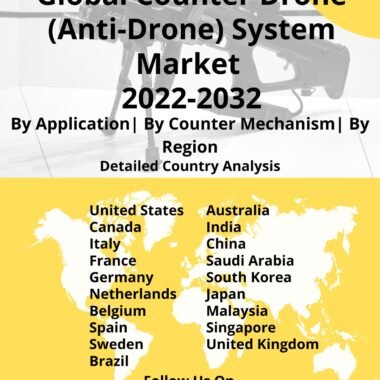Description
Composites are made up of metallic as well as for non-metallic components. They are essentially a combination of both a fiber and a matrix. These materials are known for their lightweight architecture which is used in the design of aircraft airframes, tactical vehicles, UAVs, etc. The use of these materials has been increasing within the aerospace and defense segment owing to the high tensile strength and low density associated with composites. On making a comparative study, it is seen that carbon fibers weigh roughly 25% that of steel’s weight and 70% that of aluminum’s weight.
The overall composites market can be segmented by Type, Region, and Platform. The type segment includes thermoset, thermoplastic, and others. The regional segment provides a competitive mapping across North America, Europe, APAC, the Middle East, and the RoW. While, the platform segment is further categorized by land, naval, airborne and unmanned systems.
The lightweight properties associated with these materials are also anticipated to boost the fuel economy associated with the respective military platform. As the weight of a vehicle reduces, the propulsion power required by the combatant also decreases. Therefore, the use of this technology optimizes the carbon emissions for military platforms. The sustainability associated with composite materials is expected to be one of the key drivers for their rapid market penetration. This is one of the factors that support the increased R&D investment within the material sciences industry.
Growth in tactical maneuverability over mobility is another key driver for the composites market. The introduction of urban warfare has redefined battle tactics which instate the requirement for lighter and faster vehicles. Warfare in an urban setting requires the use of easily steerable combatants which promotes the use of composites in the development of APCs (Armored personnel carriers) and IFVs (infantry fighting vehicles).
Contrarily, one of the key market restraints for the aerospace and defense composites sector is the cost of the material. Composites are generally more cost-intensive as compared to traditionally used metal components due to which the market growth for the same can be stunted. Moreover, thermoset composites are not recyclable. Therefore, the maintenance cost incurred for the redesigning or remolding of an existing vehicle component can be highly cost cumbersome for the end-user.
The growth in research infrastructure for the advanced materials market is one of the main drivers for the aerospace and defense composites market. The introduction of technologies like composite metal form armor is expected to boost the overall market trends associated with this sector. Composite Metal Foam can reduce the weight of an armored vehicle and provide comparable protection against projectiles. The material can be made by bubbling gas through the molten metal to produce a frothy mixture. The mixture is cooled to procure a lightweight, textured matrix with metallic spheres. This process reduces the weight of the metal substantially while retaining the survivability characteristics associated with the same. According to studies, the composite steel foam could absorb 72-75% of the kinetic energy produced on impact by 0.5 caliber balls. As for the armor-piercing rounds, 68%-78% of the kinetic energy was absorbed.
On performing a value chain analysis, it is noticed that the commercial aviation segment accounts for a major share of the aerospace and defense composites market. Thermoset plastics account for a larger market potential within this segment owing to increased use and lesser cost as compared to thermoplastic composites. Some of the key commercial aircraft models that make use of composites include Boeing 737 Max, Boeing 777Airbus A350, etc. Roughly 12% of the airframe mass for Boeing 777 is made up of composites. While in the case of Boeing 737, Airbus A350, etc the overall structure is made up of 50% composites by weight. The use of composite materials in components like wings and fuselages is expected to boost the market growth.
Composites are also used in the military aviation segment. For instance, Boron Reinforced Epoxy composites are used to fabricate the skin of the U.S. F14 and F15 fighters. The composition of composites in the structural design for fighter aircraft has increased within the past decade. For example, the F15 aircraft was composed of 2% composites (by weight). However, the F18 model makes use of 19% composites and the F22 model is composed of 24% composites. Therefore, an increasing trend is observed in the use of composites within the aerospace and defense composites vertical. The extensive use of composites is also noticed in the UAV manufacturing segment. Epoxy resins are some of the key raw materials used in the fabrication of UAVs. Moreover, it is to be noted that composites reduce the weight associated with UAVs by a value of roughly 14-45%.




